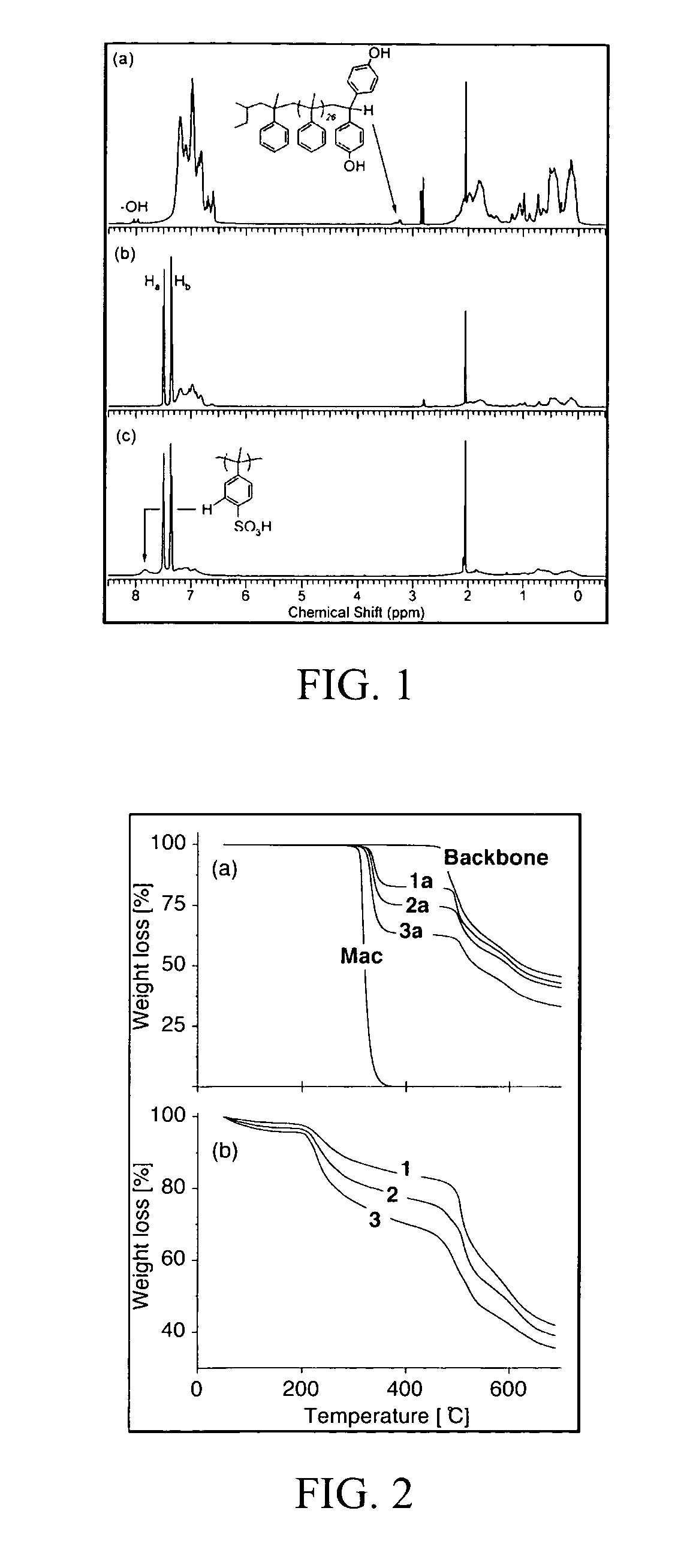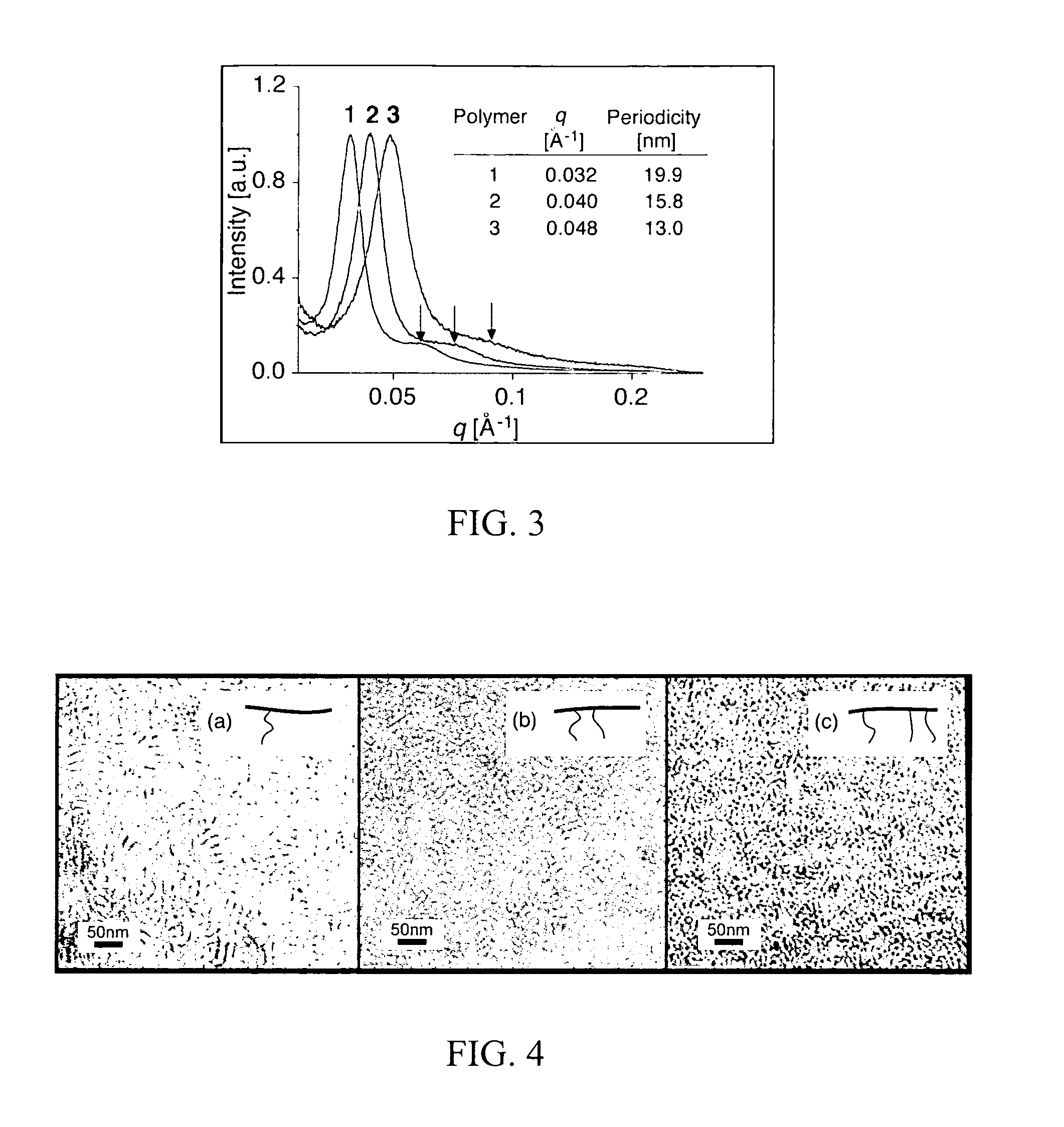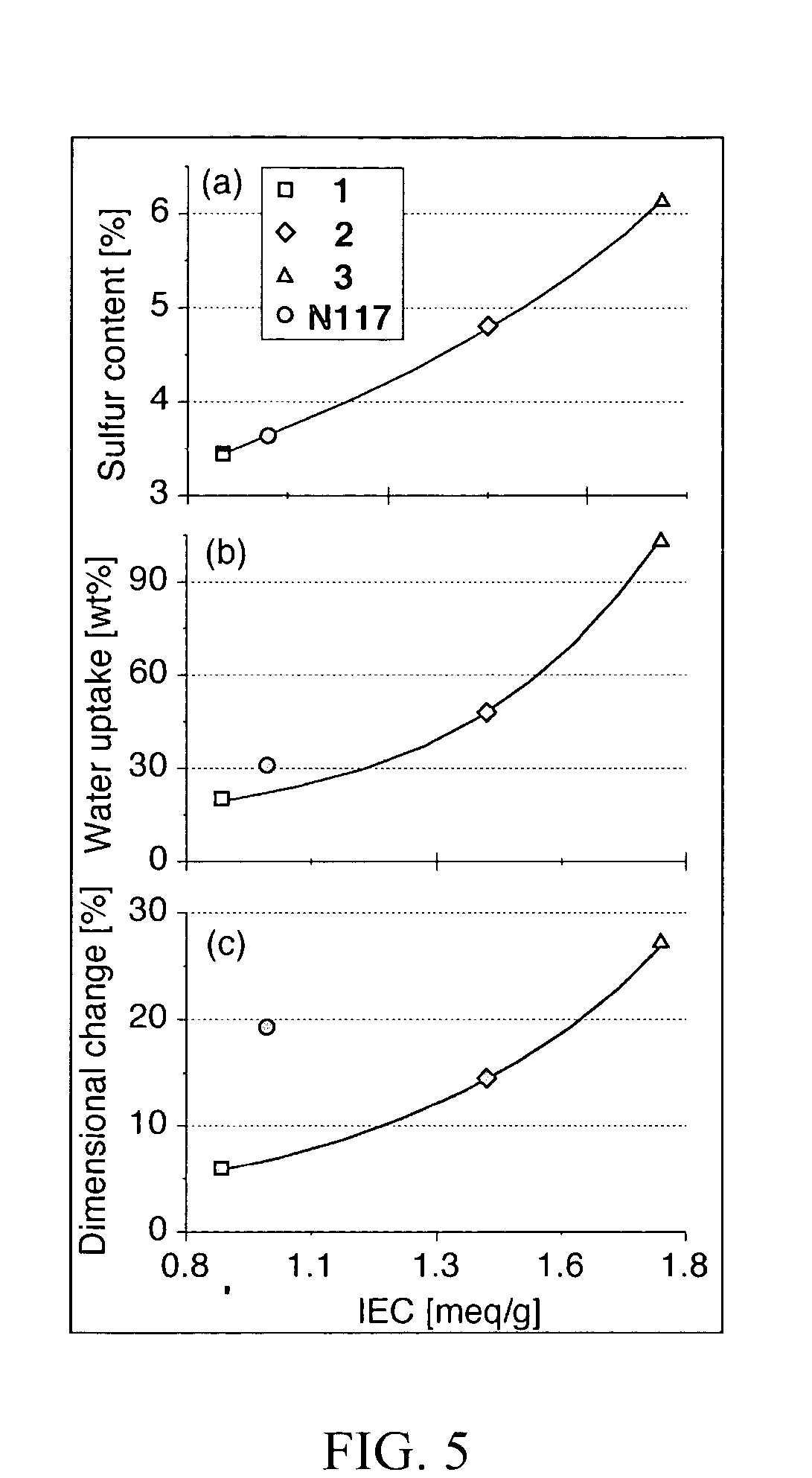Fluorinated comb-shaped polymers
a comb-shaped polymer and fluorinated technology, applied in the field of fluorinated comb polymers, can solve the problems of high fuel permeability, high cost of production of nafion®, and low operating temperature, and achieve excellent properties and excellent properties
- Summary
- Abstract
- Description
- Claims
- Application Information
AI Technical Summary
Benefits of technology
Problems solved by technology
Method used
Image
Examples
Embodiment Construction
[0032] Synthesis of Copolymers:
[0033] In order to obtain comb polymers with uniform and well-defined side chain lengths the side chains were prepared using anionic polymerization methods. Diphenylethylene (DPE) capping chemistry was then employed to produce end-functionalized macromonomers that could be subsequently copolymerized into the main chain polymer.
[0034]α-Methyl styrene may be readily polymerized using standard low temperature anionic techniques to produce monodisperse polymers. α-Methyl styrene was chosen as the monomer for the side chain because previous studies indicated that it was substantially more stable to oxidative attack than styrene-based materials due to the absence of the chemically labile α-hydrogens on the polystyrene backbone. The macromonomers were synthesized by modifying a previously reported procedure for the synthesis end-functionalized condensation macromonomers (Quirk, R. P.; Wang, Y. Polym. Internat., 1993, 31, 51, the disclosure of which his here...
PUM
| Property | Measurement | Unit |
|---|---|---|
| Hydrophilicity | aaaaa | aaaaa |
Abstract
Description
Claims
Application Information
 Login to View More
Login to View More - R&D
- Intellectual Property
- Life Sciences
- Materials
- Tech Scout
- Unparalleled Data Quality
- Higher Quality Content
- 60% Fewer Hallucinations
Browse by: Latest US Patents, China's latest patents, Technical Efficacy Thesaurus, Application Domain, Technology Topic, Popular Technical Reports.
© 2025 PatSnap. All rights reserved.Legal|Privacy policy|Modern Slavery Act Transparency Statement|Sitemap|About US| Contact US: help@patsnap.com



